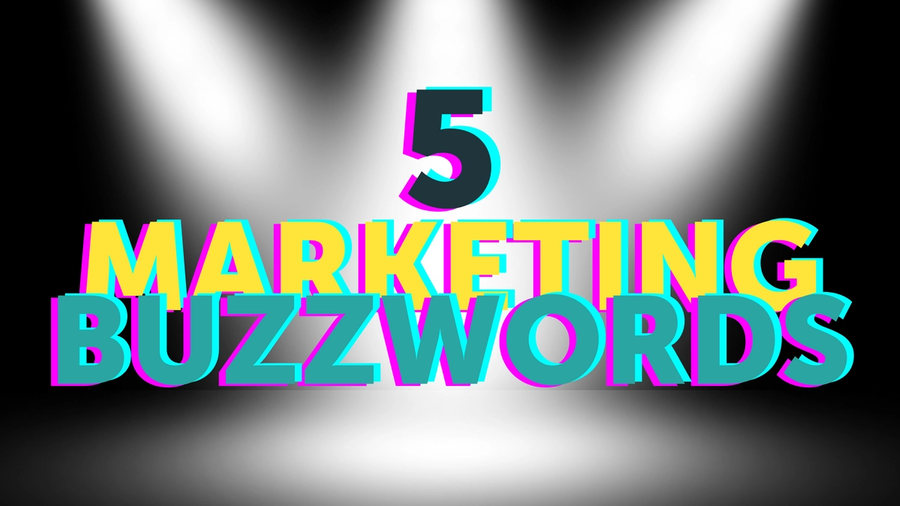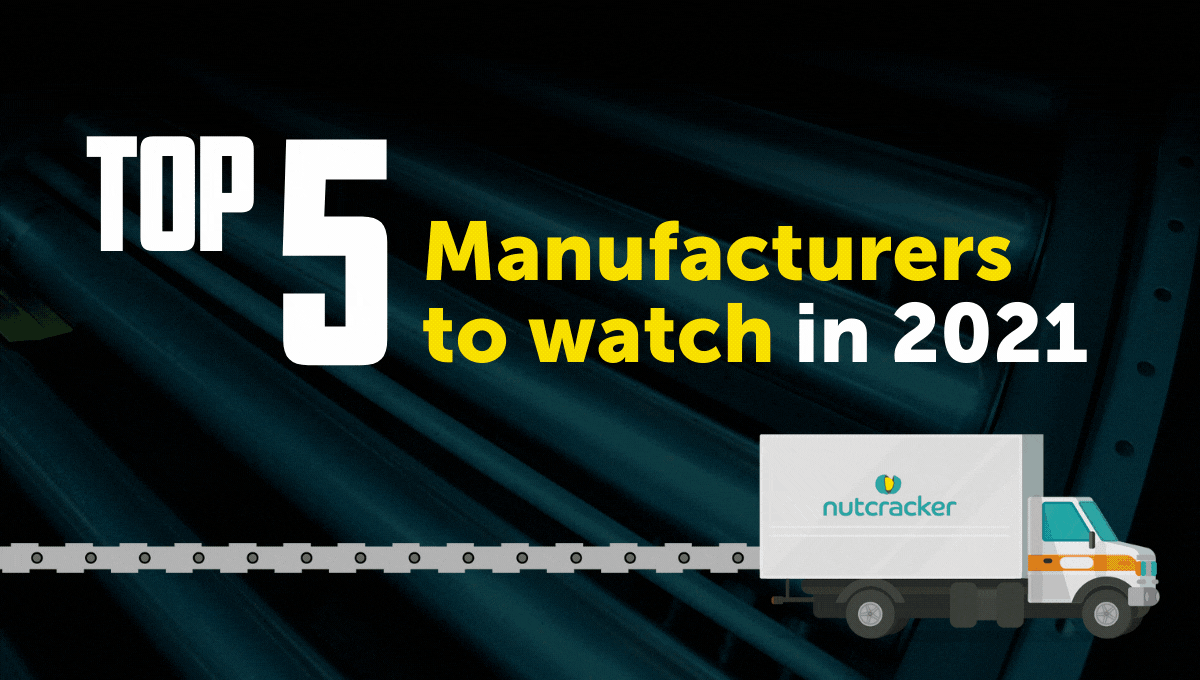News, Views & Opinions
Top 5 marketing buzzwords
Published: 04/06/2021 |Updated 27/10/2025
Marketing buzzwords come and go, but some overstay their welcome. Terms that felt fresh in 2021 now sound outdated, vague, or worse, like you're not paying attention.
The problem isn't the concepts behind these words. It's that most brands stopped at the label and never did the work. They slapped "phygital" on a mediocre app integration or called their content "snackable" without making it valuable.
In 2025, the gap between talking about marketing and executing it has never been wider. The brands winning aren't chasing buzzwords. They're rethinking how these ideas actually work in practice.
Here are five terms that died this year and what replaced them.
Humaning → hyper-personalisation at scale
What it was: "Humaning" pushed the idea that brands should treat customers like people, not transactions. Noble concept. Terrible execution.
Why it died: Because treating customers "like humans" became table stakes. Every brand claimed empathy, but most still sent generic emails, irrelevant ads, and tone-deaf messaging. The word became a shield for lazy marketing.
What replaced it: Hyper-personalisation at scale. This isn't about adding a first name to an email. It's about using real behavioural data to anticipate needs, serve individual context, and automate relevance without losing the human touch.
Take one of our financial services clients. They moved their entire CRM into HubSpot and built a system that tracks every contact interaction, guide downloads, email clicks, and page visits. That data automatically syncs with Meta Ads, so campaigns reflect real behaviour, not assumptions.
Someone downloads an inheritance tax guide but doesn't book a consultation? They see a retargeting ad with an expert video. Visit the financial advice page twice? The next ad offers a consultation slot. All of it happens automatically, at scale, based on what people actually do.
That's the difference. Hyper-personalisation uses technology to deliver individual relevance across hundreds or thousands of contacts. "Humaning" was a nice idea. This is the execution.
Phygital → invisible tech experiences
What it was: Blending physical and digital touchpoints. QR codes on packaging. AR try-ons. In-store tablets.
Why it died: Most "phygital" experiences were gimmicks. Brands built clunky tech for the sake of saying they did it, not because it made the customer experience better. The novelty wore off fast.
What replaced it: Invisible tech experiences. The best integrations don't announce themselves. They make things easier, faster, or more intuitive without requiring instructions or fanfare.
Think Apple Pay. You tap your phone. It works. No friction, no learning curve, no "look at our cool phygital activation." The technology disappears into the background, and the experience just feels seamless.

In 2025, brands that win aren't building flashy hybrid stunts. They're using real-world data to connect loyalty programs, personalised in-store offers, and online behaviour in ways that feel natural. The tech is there, but you don't notice it, and that's the point.
Snackable content → micro-virality
What it was: Short, bite-sized content designed for quick consumption. Instagram carousels. TikToks under 15 seconds. Tweets that fit in a single scroll.
Why it died: "Snackable" became an excuse for shallow content. Brands churned out filler that got ignored because it said nothing, taught nothing, and provoked nothing. Algorithms caught on. Audiences moved on.
What replaced it: Micro-virality. This isn't about going viral globally. It's about creating quick-hit content that resonates deeply within tiny, highly engaged niches.
A B2B SaaS brand doesn't need millions of views. They need 5,000 CFOs to see a LinkedIn post that nails a specific pain point. A manufacturing company doesn't need TikTok fame. They need procurement managers in their sector to share a case study.
Micro-virality works because it's targeted, specific, and built for communities, not mass appeal. The content might be short, but it's not empty. Every piece delivers value, sparks conversation, or shifts perspective. That's what gets shared now. Not just "snackable" fluff.
If you're struggling to create content that actually lands, check out our guide on common B2B storytelling mistakes and copywriting tips that convert.
Thumb-stopping → context-aware creative
What it was: Content designed to stop people mid-scroll. Bold visuals. Punchy headlines. Attention-grabbing hooks.
Why it died: Everyone tried to be thumb-stopping, so nothing was. Feeds became a blur of stock imagery, recycled trends, and AI-generated sameness. Standing out required more than just being loud.
What replaced it: Context-aware creative. This means understanding where people are, what they're thinking about, and what they actually care about in that moment, then serving creative that speaks directly to that context.
A financial services ad targeting someone who just searched "inheritance tax planning" hits differently than a generic "plan your estate" message. A B2B ad on LinkedIn works differently from the same message on Instagram. Timing, platform behaviour, and user intent all shape what "stops the scroll" now.
In 2025, the brands breaking through aren't just using bold visuals. They're pairing originality with relevance. Clever microcopy. Real photography instead of stock. Native content that feels like it belongs in the feed, not like it's interrupting it.
And with third-party cookies disappearing, contextual targeting is the only way to serve ads that feel personal without relying on invasive tracking.
Micro-influencers → nano-community partnerships
What it was: Influencers with 10,000–500,000 followers. More niche than macro-influencers, more engaged than celebrities.
Why it died: "Micro-influencer" became a marketing tactic, not a relationship strategy. Brands paid for posts, got mediocre ROI, and moved on. Followers saw through transactional partnerships.
What replaced it: Nano-community partnerships. These are creators with 1,000–10,000 followers who are deeply embedded in specific communities. They're not influencers in the traditional sense. They're experts, enthusiasts, and trusted voices.
A cycling brand doesn't just pay someone with 50k followers to post a photo. They partner with a local cycling club admin who runs group rides every weekend. A B2B software company doesn't hire a LinkedIn "thought leader." They collaborate with an operations director who's genuinely solved problems using their product.
These partnerships work because they're built on credibility, not reach. The audience is smaller, but the trust is real. And in B2B, that trust translates to leads, referrals, and long-term customer relationships, not just vanity metrics.
If your brand is trying to connect with younger, digitally native audiences, appealing to Gen Z requires authentic partnerships, not paid influencer spam.
What this means for B2B marketing in 2025 and 2026
The shift from buzzwords to execution isn't subtle. Marketing managers can't afford to coast on terminology anymore. Boards, investors, and sales teams want proof that marketing drives revenue, not just brand awareness or engagement.
That means:
- Personalisation has to be automated, behavioural, and scalable, not just a first name in an email.
- Content needs to deliver real value, spark conversation, or solve problems, not just fill a feed.
- Creative must be context-aware, platform-native, and original, not recycled stock imagery with a logo slapped on.
- Partnerships should be built on trust and community, not follower counts and one-off posts.
The brands that win in 2025 are the ones that stopped chasing labels and started executing smarter strategies. That takes better data, tighter processes, and a creative approach that actually connects.
At Nutcracker, we help B2B brands move past empty jargon and build marketing that delivers measurable growth. Whether it's digital strategy, content that converts, or campaigns that scale, we focus on what works—not what's trendy.
Want to know if your marketing strategy is stuck in 2021? Book a marketing audit and we'll show you where the gaps are and how to fix them.
At Nutcracker, we do things differently. We’re not your typical marketing agency because we don’t sit still. We adapt, change and improve every aspect of the marketing we do for our clients until we unearth the results we want, and then we adapt again. To find out more, email jenny.knighting@nutcrackeragency.com.
Author Bio
Charles Scherer, Content Lead at Nutcracker Agency
Charles Scherer is the Content Lead at Nutcracker Agency, a B2B marketing firm with offices in Ipswich and London. With years of experience crafting compelling narratives for B2B brands, Charles specialises in creating content that not only tells a great story but also delivers measurable business outcomes.
His expertise lies in bridging the gap between creative public relations strategies and tangible results, helping brands secure valuable media coverage and build topical authority online. Charles's work demonstrates a deep understanding of what makes a brand's story resonate with both journalists and target audiences, making him a trusted voice in the field of B2B content and PR
Share this:





